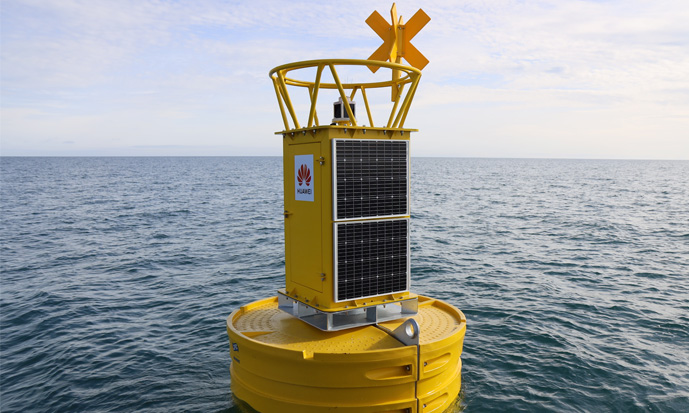Can Technology Save Our Planet?
The following article is based on a keynote speech given by Huawei’s Rotating Chairman Ken Hu at the Caixin Summer Summit on July 8. He focused on technology’s key role in enabling nature conservation efforts, citing two Huawei TECH4ALL projects as well as a solution for protecting marine life on China’s Yangtze River as examples of the pivotal effect tech can have.
Today’s digital technologies are not just changing the way we work and live, they are also reshaping our approach to nature conservation in ways that were impossible even a decade ago.
Innovative solutions born from technology are making environmental monitoring vastly more efficient, enabling proactive and real-time early warning systems that can combat threats and underpin data-driven, evidence-based conservation measures. And these advances have not arrived a moment too soon. With the UN reporting that up to 1 million species are threatened with extinction, the world is facing a biodiversity crisis on an unprecedented scale.
Protecting the last 36%
One of the most pressing threats to biodiversity is the sustained destruction of natural habitats. Currently, just 36% of the world’s rainforests remain intact. A major contributor to this is illegal logging, which accounts for between 50% and 90% of lost forest cover. The Palawan rainforest ecosystem in the Philippines is no exception – the island loses the equivalent of 7,700 football pitches of forest per year, much of which is attributable to illegal logging.
And when you protect trees, you protect everything else in the rainforest ecosystem. To detect and prevent illegal loggers, the “Nature Guardian” acoustic monitoring system comprises solar-powered Guardian devices installed high up in tree canopies where they cannot be seen.
Guardian devices developed by our partner Rainforest Connection are deployed in Palawan under the Huawei TECH4ALL initiative. Click here for the full video.
The devices can detect the sound of environmental threats such as the chainsaws, trucks, and voices that indicate the presence of illegal loggers. The audio data is transmitted to a cloud platform in real time over a wireless network to be interpreted by AI. When a threat is detected, an alert is sent to rangers in real time via a phone app. Rangers can then immediately set off to the location and intercept potentially illegal events before they begin.
As well as threats, AI can also be trained to recognize individual species, enabling conservationists to study population behaviors, distribution, and the impact of external factors. For example, in Austria’s wetlands, the Guardian system is used to study the effects of climate change on bird and amphibian life. Off the south coast of Ireland, autonomous hydrophones deployed underwater are studying how noise pollution affects porpoises, whales, and dolphins.
-

A “Guardian” deployed in Austria -

-

-

The “Smart Buoy” deployed off Ireland’s coast -

It is intended that the data collected in both cases will act as a springboard for effective conservation strategies.
Protecting the last 36
In Bawangling forest in China’s Hainan island, the world’s 36 remaining Hainan gibbons are distributed over an area of 10 km2. To help the critically endangered gibbon repopulate, we need to know exactly where they are and how they behave. Traditional monitoring methods that rely on visual identification by rangers or off-line recording equipment are ineffective: the gibbons are fast, alert, and move high up in the forest canopy.
However, as in Palawan, what we can do is listen. With five acoustics devices deployed in the forest in 2021, we can identify individual gibbons with a current accuracy of 95%.

And that’s just the beginning. The plan is to adjust the parameters of the AI model to establish a unique voice ID for each gibbon that will enable conservationists to monitor dynamic changes to the population structure in real time.
Protecting the last 1,000
Another species facing extinction is the finless porpoise in China’s Yangtze river. Fewer than 1,000 are left, decimated by the prevalence of illegal fishing which has made the cetacean a rare sight over the past two decades.
Illegal fishing has decimated fish stocks in the Yangtze River and left the finless porpoise facing extinction
In response, China implemented a 10-year fishing ban in the Yangtze River basin on January 1, 2021, which requires the whole river to be closely monitored. The resources and logistics involved to run things like patrol boats and fixed monitoring stations make traditional solutions impossible.
So, we must turn to technology.
Illegal fishing has decimated fish stocks in the Yangtze River and left the finless porpoise facing extinction – until now
The information system for enforcing the fishing ban employs infrared thermal imaging cameras deployed at the main locations of illegal fishing coupled with 5G, cloud computing, AI, and big data. After conducting a pilot project, the benefits of the solution soon became evident. Fish stocks are gradually recovering, and in the past six months, nearly 180 porpoises have been spotted in the Wuhan stretch of the river.
Protecting our home together
Obviously, the success of all these projects depends on partnerships that pool a wide range of specialist expertise drawn from technology companies, conservation organizations, researchers, NGOs, and other stakeholders.
I believe that the we are just starting to tap the potential of digital technology to reverse humanity’s impact on the planet. As a technology company, Huawei will continue to innovate. But at the same time, it is imperative that more friends in the scientific, technology, and environmental communities come together to work towards the same goal: to protect our one and only home.
TECH4ALL in action
Further reading
- Read more about our TECH4ALL environmental projects
- Visit the Tech4Nature website for more information on our conservation projects in partnership with IUCN.
Disclaimer: Any views and/or opinions expressed in this post by individual authors or contributors are their personal views and/or opinions and do not necessarily reflect the views and/or opinions of Huawei Technologies.





Leave a Comment